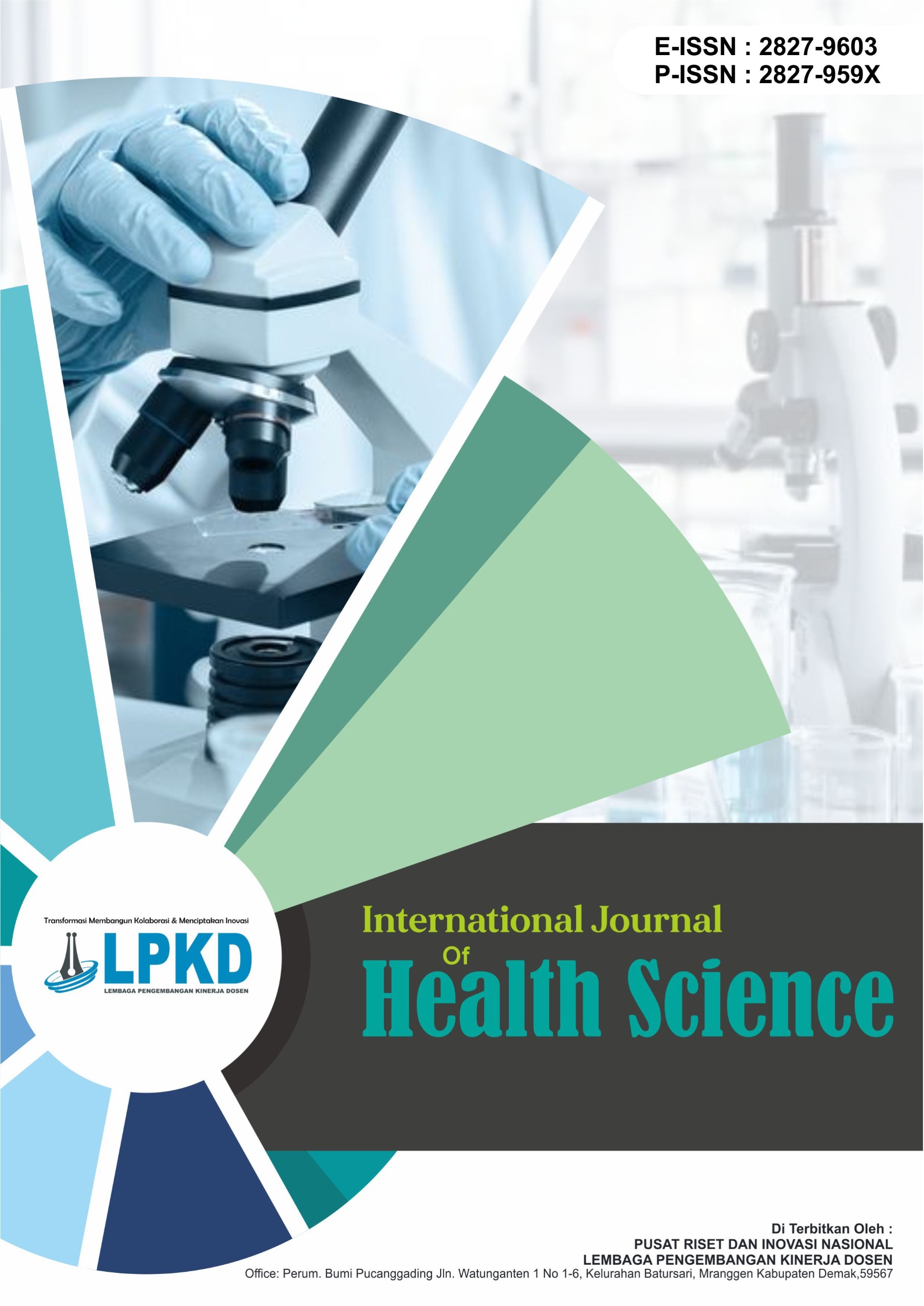From Benign To Malignant: A Case Report of Male Breast Cancer Mimicking Gynecomastia
DOI:
https://doi.org/10.55606/ijhs.v5i3.6207Keywords:
Breast Cancer, Diagnosis Dini, Male Gynecomastia, Mature Male, Terapi TamoxifenAbstract
Introduction: Carcinoma of the male breast is a very uncommon malignancy and accounts for less than 1% of all cases of breast carcinoma. The nonspecific presentation, along with low clinical suspicion, usually results in diagnosis at a delayed stage and poorer outcomes. Gynecomastia is a benign proliferation of male breast tissue and is the most common differential diagnosis that can mask underlying malignancy. Objective: To present a rare case of male breast cancer initially misdiagnosed as gynecomastia, and to emphasize the importance of early recognition and accurate differentiation between benign and malignant male breast conditions. Case Report: A 40-year-old male patient presented with a progressively enlarging right breast mass, which was earlier diagnosed as gynecomastia. The mass had been present since childhood but showed notable growth over the past two years. Physical examination revealed a hard, immobile, tender mass, 7 × 10 cm in size, without nipple discharge or axillary lymphadenopathy. Histopathology confirmed mixed carcinoma: invasive carcinoma of no special type with invasive lobular carcinoma. No metastasis was seen on imaging studies. Immunohistochemistry showed ER(+), PR(+), HER2(-), and Ki-67 at 20%. The patient underwent modified radical mastectomy, chemotherapy, and tamoxifen therapy, with no recurrence observed at six-month follow-up. Discussion: This case represents the diagnostic dilemma in differentiating male breast cancer from gynecomastia, particularly in young males without any risk factors. The diagnosis is even difficult when it is an invasive lobular carcinoma or a mixed type. Imaging and biopsy remain important in the management. Conclusion: Clinicians should have a high index of suspicion for malignancy when dealing with male breast masses. A timely diagnosis ensures appropriate treatment and results in better patient outcomes.
Downloads
References
Aranda-Gutierrez, A., & Diaz-Perez, H. (2023). Histology, mammary glands. StatPearls Publishing. https://www.ncbi.nlm.nih.gov/books/NBK547732/
Christgen, M., Cserni, G., Floris, G., Marchio, C., Djerroudi, L., Kreipe, H., et al. (2021). Lobular breast cancer: Histomorphology and different concepts of a special spectrum of tumors. Cancers (Basel), 13(15), 3695. https://www.mdpi.com/2072-6694/13/15/3695
Devesa, S. S., Blot, W. J., Stone, B. J., Miller, B. A., Tarone, R. E., & Fraumeni, J. F. (1995). Recent cancer trends in the United States. JNCI: Journal of the National Cancer Institute, 87(3), 175–182. https://doi.org/10.1093/jnci/87.3.175
Fentiman, I. S. (2023). Risk factors for male breast cancer. American Journal of Translational Research, 15(12), 6918–6925. http://www.ncbi.nlm.nih.gov/pubmed/38186995
Floris, G., Djerroudi, L., Zels, G., De Schepper, M., Richard, F., Brahimaj, R., et al. (2025). Pitfalls in the histological diagnosis of morphologic variants of invasive lobular carcinoma of the breast. Modern Pathology, 38(9), 100837. https://linkinghub.elsevier.com/retrieve/pii/S0893395225001346
Hassett, M. J., Somerfield, M. R., Baker, E. R., Cardoso, F., Kansal, K. J., Kwait, D. C., et al. (2020). Management of male breast cancer: ASCO guideline. Journal of Clinical Oncology, 38(16), 1849–1863. https://doi.org/10.1200/JCO.19.03120
Hill, T. D., Khamis, H. J., Tyczynski, J. E., & Berkel, H. (J.) (2005). Comparison of male and female breast cancer incidence trends, tumor characteristics, and survival. Annals of Epidemiology, 15(10), 773–780. https://linkinghub.elsevier.com/retrieve/pii/S1047279705000128
Mannix, J., Duke, H., Almajnooni, A., & Ongkeko, M. (2024). Imaging the male breast: Gynecomastia, male breast cancer, and beyond. RadioGraphics, 44(6). https://doi.org/10.1148/rg.230181
Mekheal, E., Kania, B. E., Kumari, P., Kumar, V., & Maroules, M. (2022). Gynecomastia and malignancy: A case of male invasive ductal breast carcinoma treated with neoadjuvant chemotherapy. American Journal of Case Reports, 23. https://www.amjcaserep.com/abstract/index/idArt/937370
Metzger-Filho, O., Ferreira, A. R., Jeselsohn, R., Barry, W. T., Dillon, D. A., Brock, J. E., et al. (2019). Mixed invasive ductal and lobular carcinoma of the breast: Prognosis and the importance of histologic grade. The Oncologist, 24(7), e441–e449. https://doi.org/10.1634/theoncologist.2018-0538
Spreafico, F. S., Cardoso-Filho, C., Cabello, C., Sarian, L. O., Zeferino, L. C., & Vale, D. B. (2020). Breast cancer in men: Clinical and pathological analysis of 817 cases. American Journal of Men’s Health, 14(4). https://doi.org/10.1177/1557988320908109
Swamy, N., Rohilla, M., Raichandani, S., & Bryant-Smith, G. (2021). Epidemiology of male breast diseases: A 10-year institutional review. Clinical Imaging, 72, 142–150. https://linkinghub.elsevier.com/retrieve/pii/S0899707120304551
Vadakekut, E., & Puckett, Y. (2025). New palpable breast mass. StatPearls Publishing. https://www.ncbi.nlm.nih.gov/books/NBK560757/
Zheng, G., & Leone, J. P. (2022). Male breast cancer: An updated review of epidemiology, clinicopathology, and treatment. In H. Han (Ed.), Journal of Oncology, 2022, 1–11. https://www.hindawi.com/journals/jo/2022/1734049/
Downloads
Published
How to Cite
Issue
Section
License
Copyright (c) 2025 International Journal Of Health Science

This work is licensed under a Creative Commons Attribution-ShareAlike 4.0 International License.







